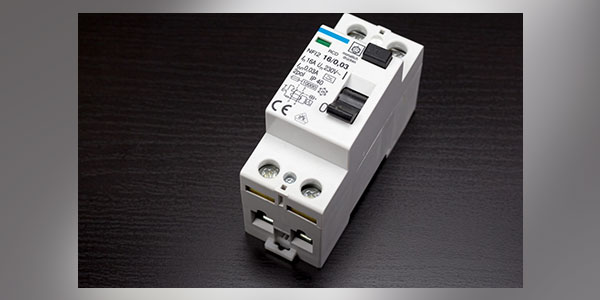By Eric Gertie – Cope Product Manager
Electrical, low voltage, and mechanical systems are the lifeblood of any facility’s operation. They carry power, voice, data, and electricity to keep facilities and businesses fully functioning. But the environments in which these systems are contained are not always so friendly. Various elements—including hazardous materials, environmental factors, climate, application, and more— can put electrical, low voltage, and mechanical systems at risk. When the support structures of these systems are exposed to corrosive environments, their performance in regard to mechanical, electrical and fire safety, durability, and reliability may be compromised.
Corrosion occurs when a chemical reaction causes a deterioration or weakening of material. If not correctly protected, gases and moisture from the environment that come in contact with the metal structures of facility systems can cause corrosion and, over time, the mechanical properties will lose their integrity. This can create issues ranging from reduced strength to complete system failure – or worse – threatening the safety of your team.
While there are a variety of ways to prevent corrosion in electrical, low voltage and mechanical systems, one of the initial prevention methods is to select the appropriate corrosion-resistant materials to support these systems. The intended operating environment and application should be considered when determining the best product and material for the job. For instance, caustic environments including chlorine used in waste water treatments centers or cooling towers, or lime found in cement plants are highly corrosive; they will eat away steel and even stainless steel components.
In general, cable management and mechanical supports have been traditionally executed through the use of metallic trays and/or strut treated with an anticorrosive coating (such as hot dip galvanized), paint, or plastic. However, the variability inherent in these coatings and their fitness can be compromised in the most severe environments.
Benefits of Fiberglass – Fiberglass is a viable option for demanding environments where steel strut and cable tray systems have traditionally failed. Its lightweight components can be installed quickly and easily using standard tools while making a complete corrosion-resistant support and/or cable management system.
Ease of Assembly: The installation of fiberglass is similar to the installation of metallic channels, cable tray and accessories. All standard installation practices and procedures apply and special handling is generally not required.
Specific to fiberglass strut, assembly of components can be as simple as cutting, drilling, and sealing.
Cutting: Cutting can be accomplished with a wide variety of saws. Handheld saws are suitable when only a few cuts are required. For frequent cutting, a circular power saw with a carbide-tipped masonry blade yields the best results and the greatest number of cuts. When using a power saw, dust filter masks, gloves, and long sleeve clothing should be worn.
Drilling: Any standard twist bit, even when used with battery-powered drills, will work. Carbide-tipped drill bits are recommended.
Typically, fiberglass can be fabricated and assembled in less time than their steel counterparts, resulting in substantial labor savings. On average, fiberglass is also one-third of the weight of steel, making it much easier to handle on the jobsite.
Cost-Effective: When assessing the cost of corrosion-resistant materials, fiberglass tends to be more cost-effective compared to specialty metals that are traditionally used, such as 304 or 316 Stainless Steel. Fiberglass does not require any regular maintenance to maintain its integrity. When a galvanized component is replaced once, its cost far outweighs the expense of an initial installation with fiberglass.
Durability: The combination of resins used in fiberglass (PVC, polyester, vinyl ester, etc.) have the ability to handle high and low temperatures, chemical exposures, and static loads. When designing a corrosion-resistant system, maximum operating conditions should be considered. These “worst case” conditions will determine which type of materials are best suited for the application. The three “worst case” operating conditions are: temperature, chemical environment, and loading.
Temperature Range: Different materials cover distinct temperature ranges (see chart below). Materials should be chosen that meet or exceed the minimum and maximum temperatures for the application. Continual exposure to elevated temperatures reduces the strength of plastics and glass reinforced fiberglass. Actual resin test data confirms that a 50% reduction in strength occurs at extreme high temperature levels.
Chemical Resistance: Each resin family has its own specifications regarding its performance against different environmental chemicals. “Best case” exposure is considered to be less severe contact such as spills, splashes, and vapor condensate. “Worst case” exposure can be classified as immersion for a 24-hour period. The chart below is an example of chemical tolerances of different fiberglass compounds using Aickinstrut material system.
The strength of fiberglass comes not only from the materials in which it is made, but also its manufacturing process, known as pultrusion. Pultrusion creates consistent cross-sections of material made by reinforcing a polymer resin (usually polyester or vinyl ester resin) with multiple strands of glass filament and alternating layers of glass mat.
The glass is drawn through the liquid resin, which coats and saturates the fibers. The combination of resin and glass is then continuously guided and pulled (pultruded) through a heated die that determines the shape of the component. In the die, the resin is cured to form a permanent, reinforced part which can be cut to a specific length. Since the hardened fiberglass pultrusion is reinforced with an internal arrangement of permanently bonded continuous glass fibers, it possesses great strength. In addition to strength, pultruded fiberglass components exhibit exceptional corrosion resistance. This attribute makes fiberglass the material of choice for many harsh applications.
The top glass types are made of polyester and vinyl-ester, with the vinyl-ester resin system being approximately 20% stronger and providing better corrosion resistance than polyester. Both resin systems are flame retardant, conform to ASTME84, Class 1 flame rating, and are self-extinguishing per the requirements of UL94V-0. Polyester channels are color-coded gray and the vinyl ester channels are color-coded beige.
Conclusion – Wire and cable systems often reside in hostile corrosive environments. Careful consideration should be given when identifying corrosive elements in the environment and choosing cable management and structural support materials accordingly. As a general rule of thumb, consider UL and NEMA ratings, UV resistance, and flammability testing. If you don’t know the right material or risks to avoid, contact a cable management system manufacturer to help you choose the right materials for the application.



